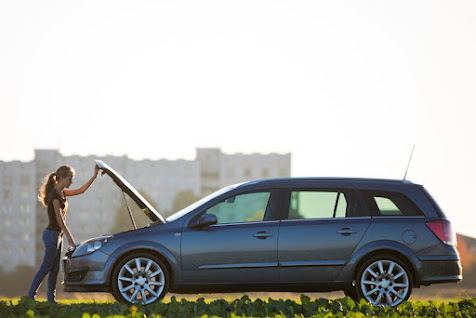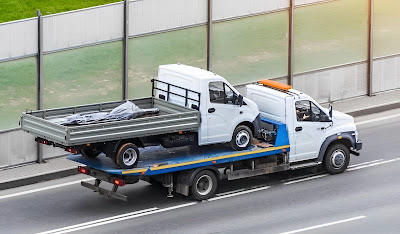DIY Roadside Assistance: Basic Car Repairs Everyone Should Know
Car breakdowns can occur when you least expect them, leaving you stranded on the side of the road with no immediate help in sight. This can be a daunting situation as it can happen anywhere or anytime. While having emergency roadside assistance services or a reliable tow company on speed dial is essential, having some basic knowledge of car repairs can be a real lifesaver. Sometimes, calling emergency assistance can be costly, and when you can fix it by yourself, then why waste your hard-earned money?
Here are the essential DIY roadside repairs that every driver should know:
1. Changing a Flat Tire
One of the most common roadside problems is a flat tire. Knowing the processof changing a flat tire is a fundamental skill for any driver. Start by parking your car in a safe location, applying the parking brake, and grabbing your spare tire, lug wrench, and jack. Remove the hubcap, loosen the lug nuts, remove the flat tire, jack up the car, and replace it with the spare. Hand-tighten the lug nuts, lower the car, and then strongly tighten the lug nuts in a star pattern.
2. Jump-Starting a Dead Battery
A dead battery can leave you stuck with a non-starting vehicle. Jump-starting your car is a valuable skill. To do this, you’ll need jumper cables and another vehicle with a functioning battery. Park the two cars close enough for the jumper cables to reach, turn off both ignitions and connect the red (positive) and black (negative) cables in the right sequence. Start the working vehicle; let it run for a few minutes, then attempt to start your car. If successful, keep it running and disconnect the cables in reverse order.
3. Replacing a Dead Battery
Sometimes, a jump start won’t revive a dead battery, and a replacement is necessary. To replace a car battery, you’ll need a socket set or wrench to remove the battery cables and possibly a bracket or clamp holding the battery in place. After removal, clean the battery terminals, place the new battery in the same position, reattach the cables (positive to positive, negative to negative), and secure it properly. It’s essential to ensure the new battery is fully charged before installation.
4. Changing the Engine Oil
Changing oil regularlyisessential for the health and longevity of your engine. While it might not be a typical roadside repair, knowing how to change your engine oil can save you time and money in the long run. You’ll need an oil filter wrench, a drain pan, a socket set, and the appropriate oil and oil filter to perform an oil change. Raise your vehicle using a jack, locate the oil drain plug, position the drain pan beneath it, and remove the plug to drain the old oil. Replace the drain plug, remove the old oil filter, grease the gasket on the new filter, and install it. Then, refill the engine with the right amount and type of oil.
5. Replacing a Serpentine Belt
A broken serpentine belt can cause various issues, such as loss of power steering, air conditioning, or alternator functionality. To replace a serpentine belt, you’ll need to locate the tensioner pulley, use a wrench to release tension, remove the old belt, and install the new one according to the belt routing diagram. Ensure it’s properly aligned, and slowly release the tensioner to apply it to the new belt.
6. Fixing a Malfunctioning Thermostat
A faulty thermostat can make your engine to overheat, leading to serious damage. You’ll need a socket set, a new thermostat, and a gasket or sealant to replace the thermostat. Drain some coolant from the radiator, locate the thermostat housing, remove the bolts, and replace the old thermostat. Be sure to clean the housing, apply the gasket or sealant, and reattach the housing. Refill the radiator usinga coolant and check for any leaks.
7. Replacing a Burnt-Out Headlight or Taillight
Driving with a burnt-out headlight or taillight is dangerous and can lead to a ticket. Consult your car’s manual for specific instructions to replace a headlight or taillight. Generally, you’ll need to access the back of the headlight or taillight assembly, unplug the wiring harness, and remove the old bulb. Install the new bulb, reconnect the wiring harness, and secure it back in place. Make sure the new bulb is working properly.
8. Fixing a Leaking Radiator Hose
A leaking radiator hose can cause your engine to overheat. To address this issue, you’ll need a new hose, a knife, hose clamps, and a screwdriver or pliers. Ensure the engine is cool before starting. Drain some coolant, locate the leaking hose, loosen the clamps, and remove the damaged hose. Cut the new hose to the appropriate length, attach it with clamps, and refill the radiator with coolant.
9. Dealing with an Overheating Engine
Various issues, including a faulty thermostat, low coolant, or a malfunctioning radiator, can cause an overheating engine. If your engine is overheating, pull over instantly and turn off the vehicle. Let it to cool down, and then check the coolant level. Add coolant or water to the radiator or reservoir if it’s low. If the problem still persists, you may need professional help.
10. Fixing a Malfunctioning Alternator
If your battery keeps dying, it could be due to a malfunctioning alternator. Replacing an alternator can be a more complex task and may require some advanced knowledge. To replace the alternator, you’ll need to disconnect the battery, locate the alternator, remove the serpentine belt, and disconnect the wiring harness. After removing the mounting bolts, install the new alternator, reconnect the wiring, and secure the serpentine belt. Finally, reconnect the battery and check the charging system.
Conclusion
In conclusion, having basic knowledge of DIY roadside repairs can be incredibly valuable. It not only saves you time and money but also provides a sense of self-reliance and confidence when you’re out on the road. However, it’s crucial to remember that not all car problems can be fixed by the side of the road, and safety should always be your top priority. If you’re ever unsure about a repair or the issue is beyond your expertise, it’s best to call for professional emergency roadside assistance.


Comments
Post a Comment